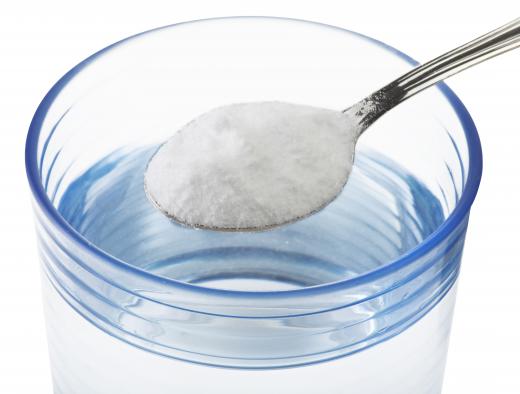What Is Sodium Acetate?
Sodium acetate, or sodium ethanoate, is the sodium salt derived from acetic acid. Sodium acetate is a substance that can be easily made from vinegar and baking soda. As the mixture cools below its melting point, it crystallizes. The crystallization is an exothermic process, so the crystals actually produce heat, giving the substance its common name, hot ice. The compound has a variety of industrial and domestic uses.
In the food industry, sodium ethanoate is used as a preservative and pickling agent. Because it helps the food maintain a specific pH, the salt can prohibit the growth of unwanted bacteria. In the pickling process, larger quantities of the chemical are used, not only serving to buffer the food from microorganisms, but also boosting the flavor of the food product.

As a cleanser, sodium acetate counteracts high levels of sulfuric acid found in factory run-off. It maintains bright metallic surfaces by eradicating rust and stains. It can even be found in leather tanning solutions and photography development treatments.
Sodium acetate also plays a role in the health industry. Diluted, it can be used as an alternative salt solution to sodium chloride in IVs. While the risks to using sodium acetate are fairly minimal, they are worth knowing. Before it can be added to an IV, the sodium acetate must be diluted. The patient should receive the solution slowly in order to avoid water retention and an imbalance of electrolytes. For patients with kidney problems, the aluminum found within this solution might be toxic. Despite these risks, the solution has been deemed safe for all ages of patients.
Many people may have a form of sodium acetate at home without even knowing it, as the compound is frequently used in heating pads. Highly saturated in water, it remains in a liquid form until a metal disk that is suspended in the solution is bent and flexed. This is easily done by working the pad with the hands. Attached to the metal disk are a few crystallized molecules that are released by the motion of the disk. They cause a quick chain reaction with the other molecules in the solution which rapidly solidify and emit heat. The heat can ease aches and pains when placed on sore muscles. Smaller packs can be used as pocket warmers during winter. These packs are reusable as the hot ice returns to its liquid state once the pack is submerged in boiling water and is allowed to gradually return to room temperature.
AS FEATURED ON:
AS FEATURED ON:











Discuss this Article
Post your comments